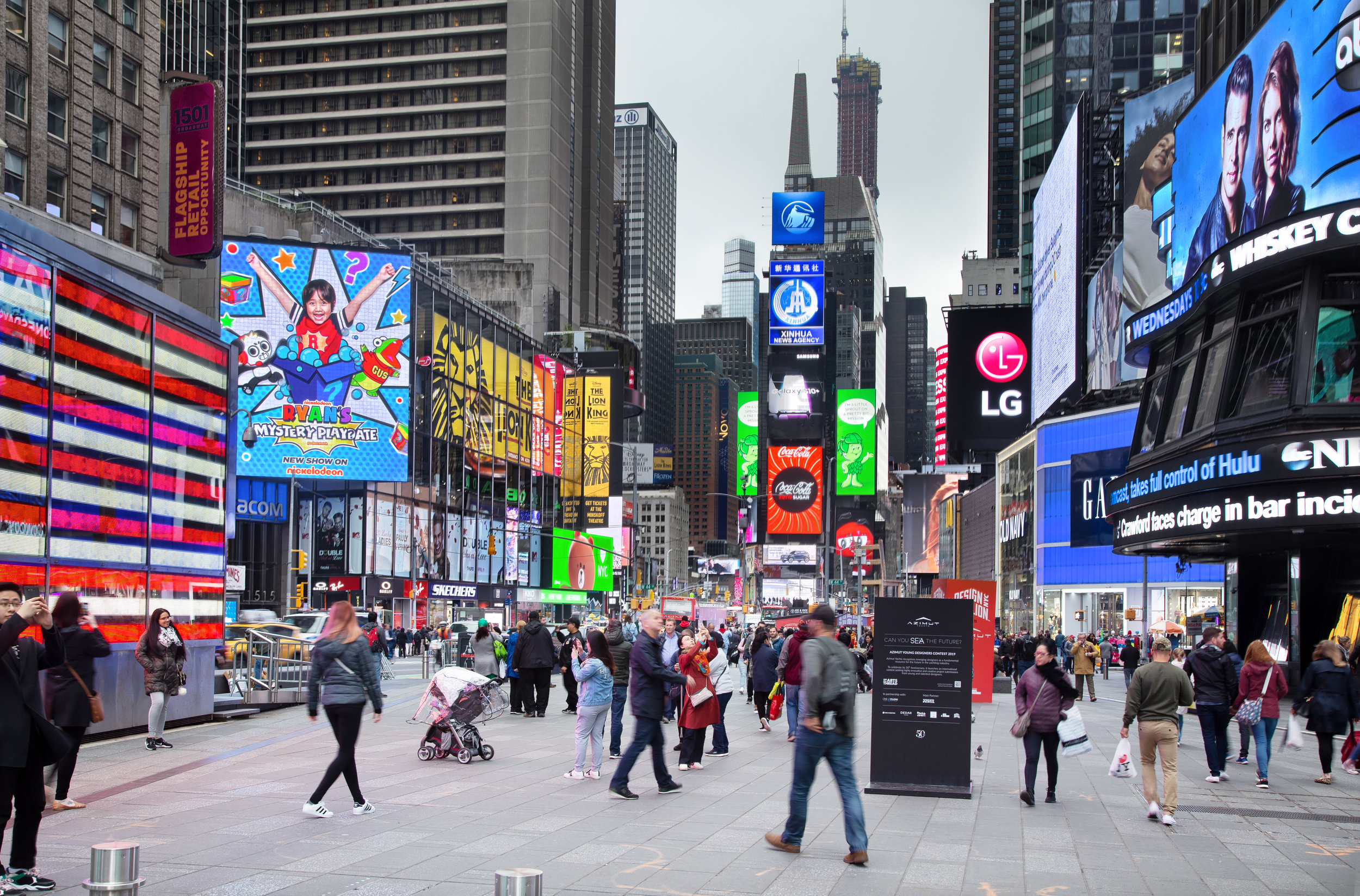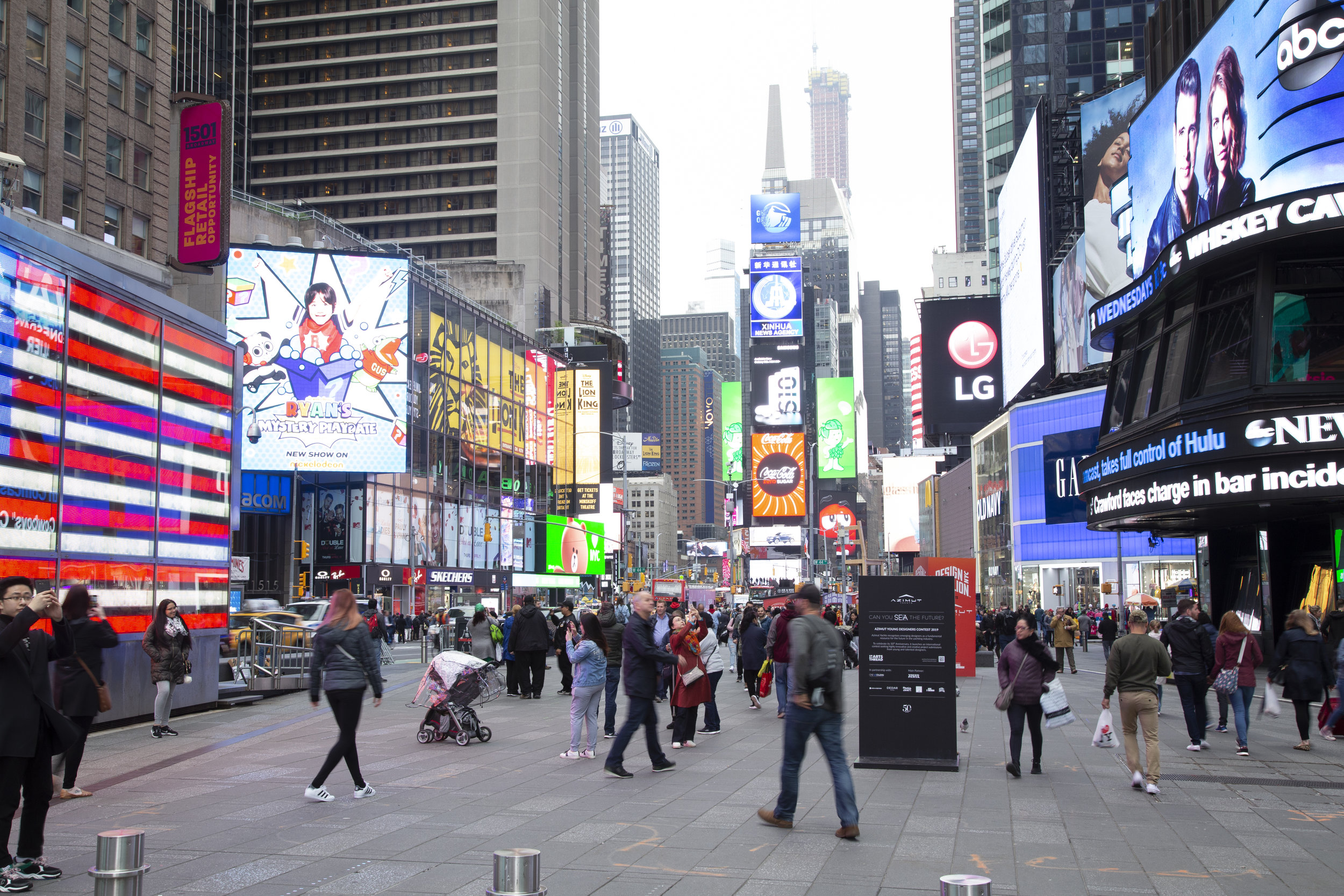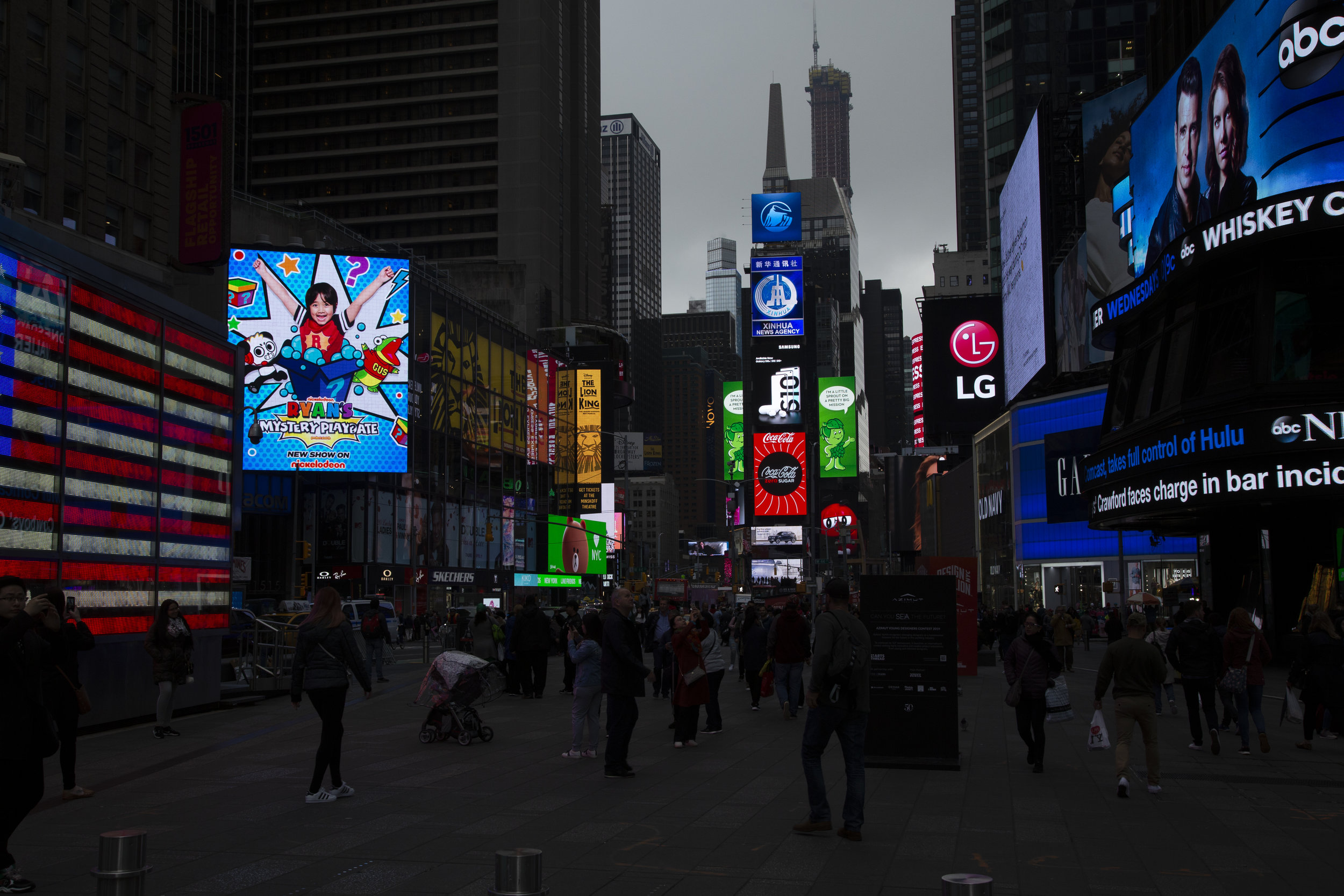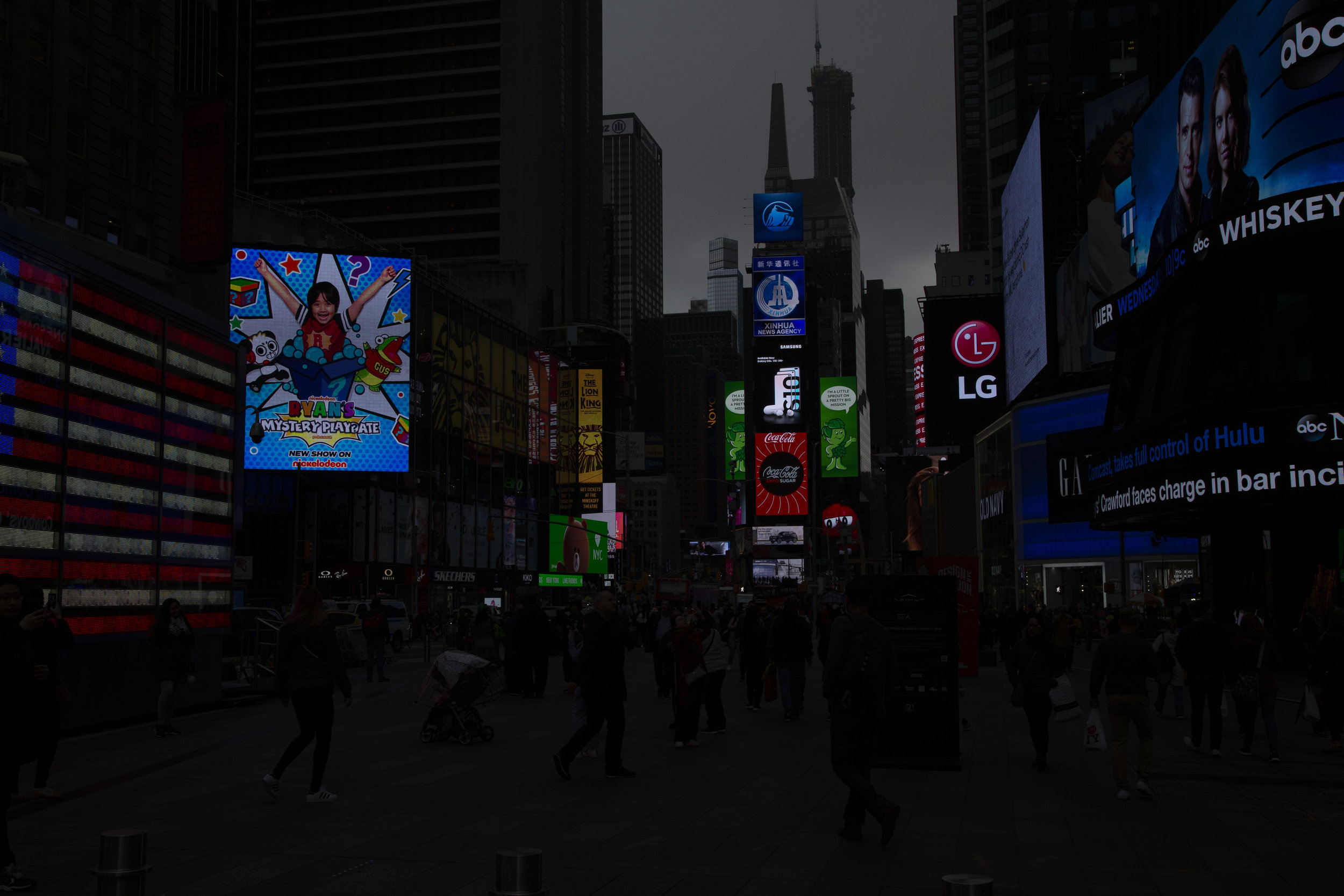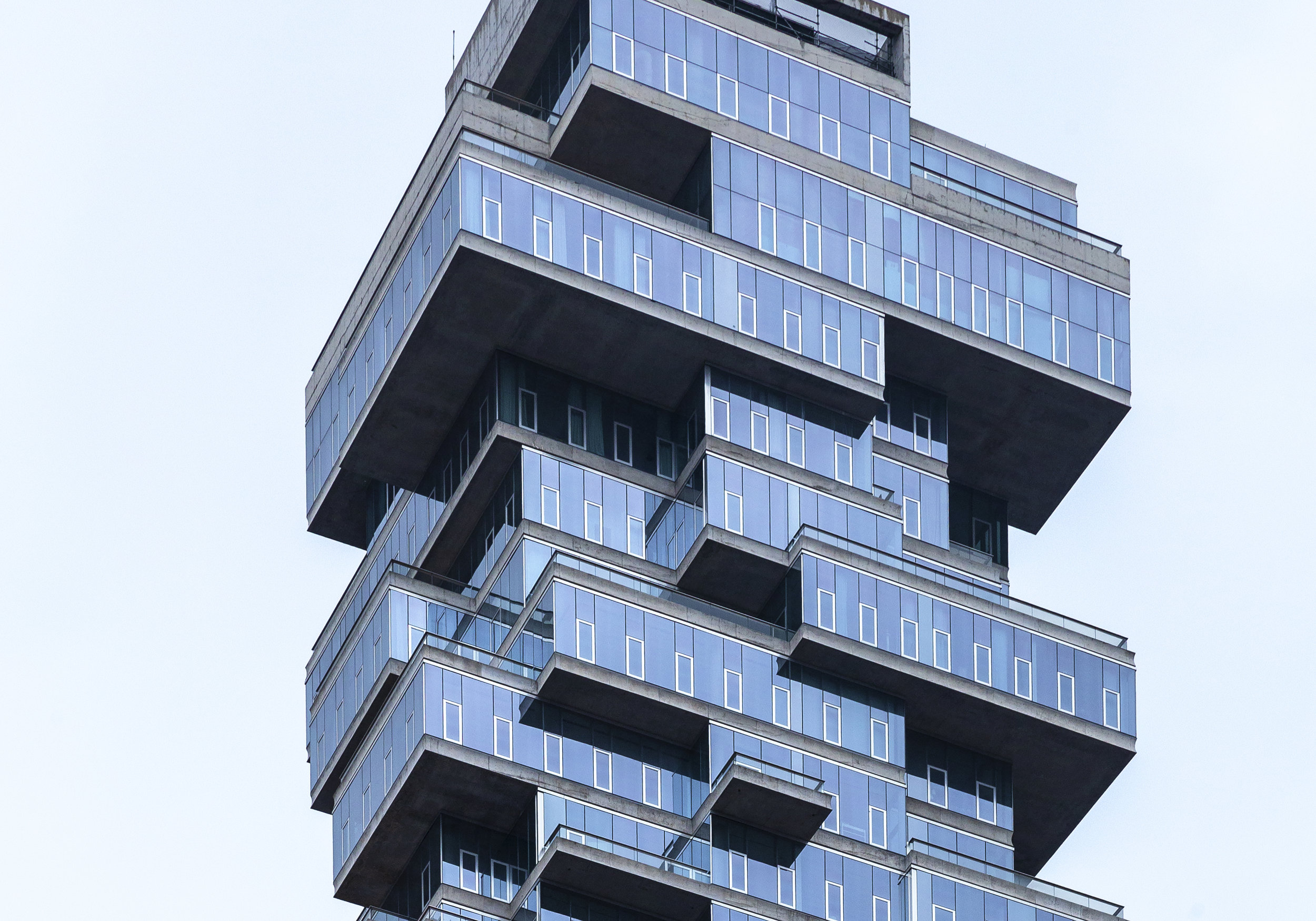During a recent business trip to New York City I carved out a few hours to walk around the West Side of Manhattan to photograph some of the new, modernist buildings recently added to the city’s skyline. Unfortunately as I headed out that morning I noticed the forecast called for overcast skies all day.
Gray skies are the bane of an outdoor photographer’s artistic hopes. Setting a proper exposure for a building (or the landscape) causes the gray sky to appear white in an image. Bright areas immediately attract the eye’s attention, diverting the viewer away from the main subject of the photograph, e.g. the building.
To address this problem photographers can consider several solutions:
Compose without the Sky
Novice architectural photographers often want to get a wide image of a building to show the entire structure. While this can certainly result in a pleasing, even artistic image it can easily become a plebeian, postcard shot instead. Worse, during overcast days the immense area of white sky can overwhelm the image.
One option is to compose the shot minimizing or eliminating the sky from the frame. In the photograph below showing Zara Hadid’s swooping condominium building at 520 W. 28th Street Street I zoomed in to show only the crazy zig-zag lines of the facade.
520 W. 28th Street
The only white sky visible in the image is in the window reflections which were turned blue by the tinted glaze.
Shoot Indoors
Okay, this might sound like cheating but when the weather gives you lemons shoot indoors. Architecture is not just about a building’s exterior structure. On a daily and more personal level people interact with the inside of a building much more than the outside. So if overcast skies pose a problem walk into a (public) building (making sure to check for any restrictions or policies regarding photography) and explore how the building relates to the the people using the building.
While walking around the World Trade Center site it is impossible to ignore the fabulous (and fabulously over budget) Oculus transportation hub designed by Santiago Calatrava. The main hall looks like the insides of an enormous white-ribbed animal. For the shot below I used a l slightly long exposure to capture the hustle of the crowds hurrying about their business.
Oculus Transportation Hub
The interior of the Oculus provides countless photographic angles and opportunities. I’ll post more images from here in a future blog post documenting my entire visit to the West Side.
Manage the Dynamic Range
Put simply, dynamic range in photography describes the ratio between the maximum and minimum measurable light intensities in a given scene. Skipping the technical complexities of this topic, suffice to say that digital cameras cannot capture the full dynamic range in a scene with very bright and very dark areas. This is often the case with overcast skies that are relatively bright and buildings/landscapes that are relatively dark. Setting the camera’s exposure to reveal the details in the dark building results in the gray sky turning white.
There are several ways to handle this. Many photographers know about a technique called “high dynamic range” or HDR. By adjusting the camera settings a photographer can take several shots in a row at different exposures. In some the buildings are exposed correctly and in others the sky is exposed correctly. Using HDR software photographers can pick and choose the best areas from multiple photos to get a properly exposed final image.
The image below is an HDR composition taken of Times Square. While the sky is still fairly boring the overall exposure is better than any of the five original images seen under the HDR composition.
Times Square, HDR Composition
Not every scene with an overcast sky requires an the HDR approach. Overcast skies can indeed be very bright, however sometimes if the cloud cover is very thick the overcast can get darker and therefore closer to the brightness value of the buildings (or landscape). In this situation the digital camera can capture the entire dynamic range, especially if the photographer shoots in the RAW format. Using image editing software such as Photoshop or Lightroom allows the photographer to create an interesting looking sky and details in the buildings from a single image.
Below is an example of a well-exposed sky and building from a single shot. This photo shows the Whitney Museum at 99 Gansevoort Street designed by Renzo Piano.
Whitney Museum
Swap Skies
In some cases there are no real options to save a shot. For these situations there remains one other option — insert a different sky from a different time or even a different place. One of the buildings on my itinerary was 56 Leonard Street designed by Herzog & de Meuron (often called the Jenga Building). Despite the intriguing design I could tell that the lack of contrast would result in a boring image. So I reached back into my photo database and pulled out an image of some wispy clouds I had shot here in Chicago. In Photoshop I combined the two images to achieve the following result.
56 Leonard Street
Neat trick, huh?
Embrace the White
When all else fails, break the rules. So what if your sky is completely white. With the right subject you can still make a photograph work. The trick here is to find a subject that is more enticing than the big, bright sky. Sometimes this means finding a subject with an unusually bright color (red is typically a good choice). Another approach is to include a person in your image. People like to look at other people. For some reason switching to black and white seems to work too.
While walking between two of my architectural targets I spotted a guy on a bicycle leaning on a building. I sensed that with other people walking nearby and some reflections in the windows this could be a good shot. Without time to adjust my camera settings I clicked the shutter.
Despite the big white sky, I still think the image works.
Tenth Avenue, New York City
Pianist Glenn Gould once said, “I always assumed everybody shared my love for overcast skies. It came as a shock to find out that some people prefer sunshine.” So don’t let cloudy skies keep you away from your camera.


